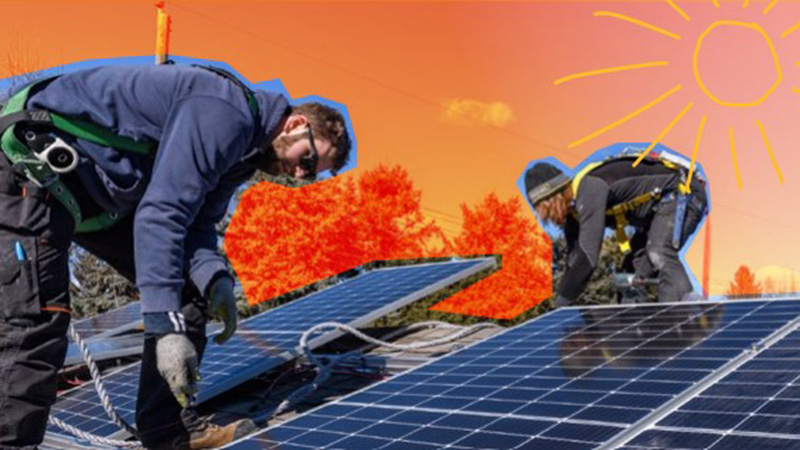New tool shines a light on solar energy

Have you been considering solar panels for your home and just not quite sure where to start? Do you know if your home is ideal to be able to harness the full potential of the power of the sun?
The City recently released a residential solar calculator as a starting point for Calgarians to understand the solar energy generation potential of the roof area of their home. This new tool will also help homeowners understand the financial viability of installing solar panels. Standard solar panels, known as photovoltaics (PV), generate an electric current by catching light particles from the sun and converting the particles into electricity. This electricity can then be used to power your home – appliances, heating systems, and lighting.
The City has created an interactive map where homeowners can search for their address and see the potential of how much solar energy their home could produce. Results show the optimal size of a PV system, installation costs, environmental impact, and financial returns. For example, on average, an installation of 10 solar panels would lessen two metric tonnes of carbon dioxide from the atmosphere – the equivalent of taking half a car off the road for a year and planting 45 tree seedlings. Climate change is caused by an increase in greenhouse gas emissions, such as carbon dioxide.
“[The calculator] was so simple to use, and it gives you a bird’s eye view really quickly to see if solar is viable,” says Bridgeland homeowner Kyle. “The calculator gives me potentially actionable data and a solid idea as to where to inquire further – it shows you what is possible to make an informed decision. Most people won’t have any idea where to start and this gives them that, specific to their residence.”
The affordability of a solar PV system for your home is assessed using three different purchase options: buy, loan, and lease. For each purchase option the average monthly saving on your utility bill is calculated, as well as your expected payback on your investment.
“I could see I would be cash flow positive right away so it certainly would motivate me to make a more informed decision,” continues Kyle.
Solar potential calculations are made based on the available roof area and a measurement of how much sunlight reaches the roof. Light Detection and Ranging (LiDAR) data is used to look at roof shape, orientation, and pitch, as well as barriers on the roof area and shading from nearby buildings or trees. An optimal number of panels is then determined based on these factors, and their individual generation is summed to a solar potential for each address.
“Its key genius is that the heat map individualizes your potential and shows you the best way to maximize your residence and roof for panel installation,” explains Kyle. “Even though I have a small house, I was surprised to see that I had more solar potential than my neighbour who has a larger house.”
The tool also guides Calgarians on next steps, connecting them with knowledgeable service providers and funding programs that can be used to offset costs of green investments. Currently the tool calculates single family homes only, however, industrial and commercial buildings may be added to the calculator in future.
Did you know?
Did you know Calgary is the sunniest major city in Canada with an average of 333 days of sunshine?

Related links
New Residential Solar Calculator for Calgarians video
Categories: Clean energy, Solar energy

